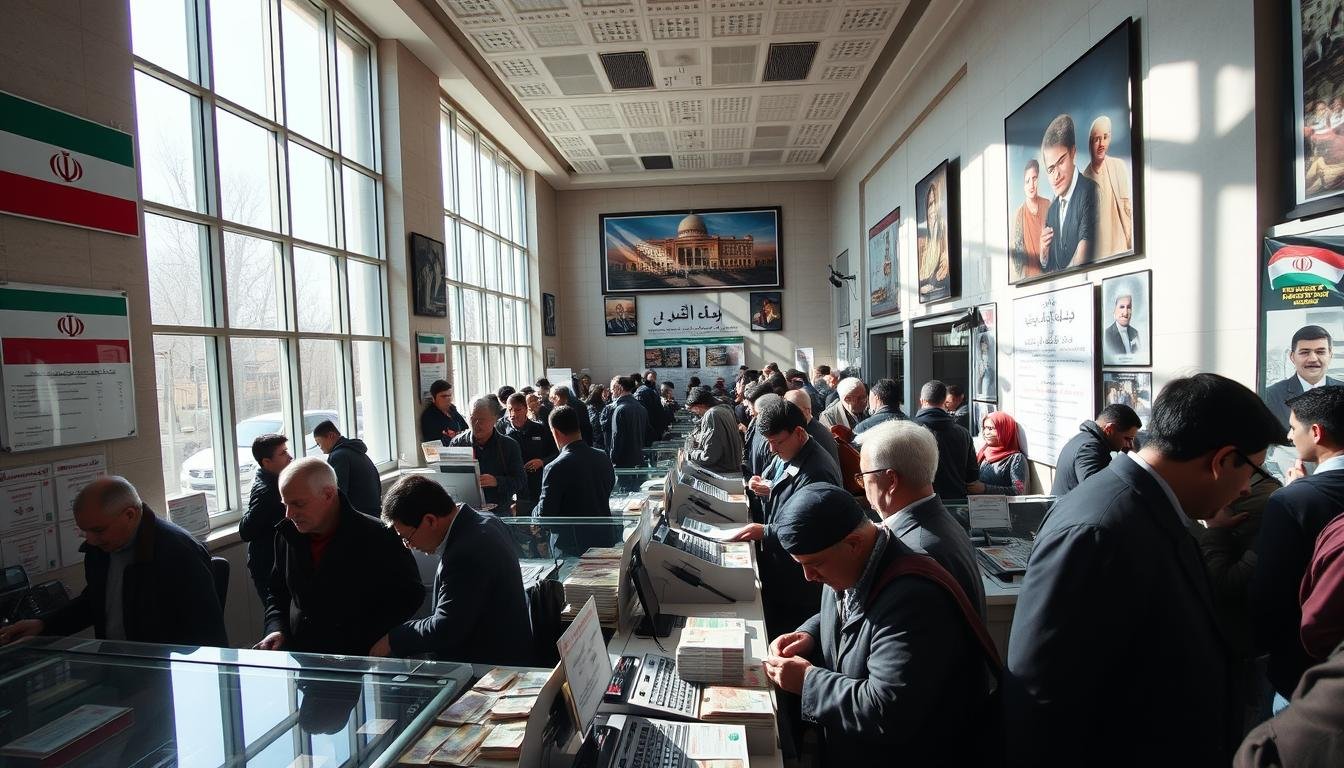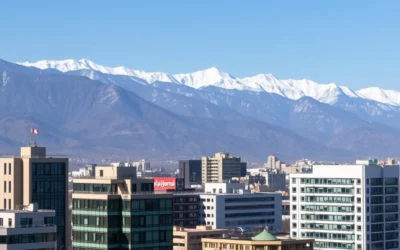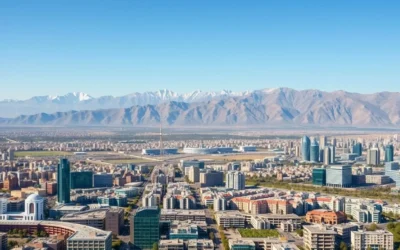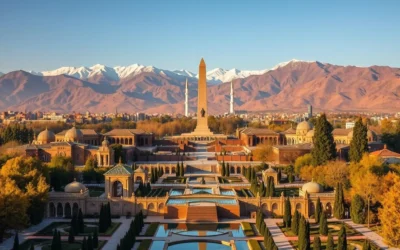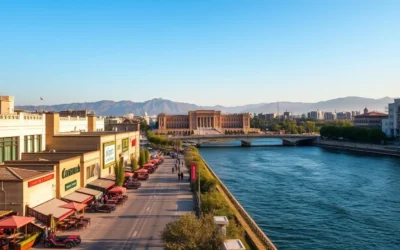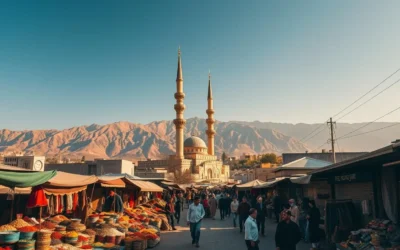✓ Accommodations✓ Flights✓ Rental Cars
Did you know that international credit and debit cards are unusable in Iran due to sanctions? This surprising fact means travelers must rely on alternative methods to manage their finances. Understanding the local payment system is essential for a smooth experience.
Iran’s financial landscape combines traditional cash transactions with modern digital options. While cash remains widely used, digital payments are becoming more common. However, international cards don’t work, so you’ll need to explore local solutions like the Iran Tourist Debit Card.
This guide will help you navigate the unique challenges of managing money in Iran. From exchanging currency to using local cards, you’ll learn how to balance cash and digital methods effectively. Stay prepared and make the most of your trip!
Understanding Iran’s Unique Payment Ecosystem
Cash remains the dominant method for transactions, especially outside major cities. In smaller towns and rural areas, you’ll find that traditional methods like rials and tomans are still widely used. This reliance on physical money is deeply rooted in the local culture and economy.
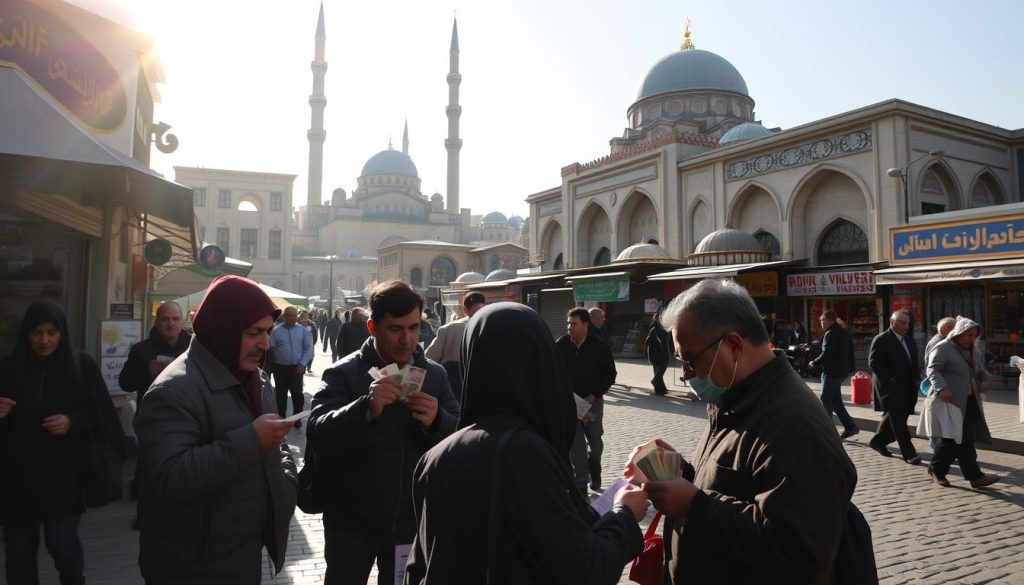
In larger cities, you might notice a mix of cash and digital payments. However, even here, cash is often preferred for small purchases or local transport. Many shops and vendors don’t have card readers, so having money on hand is essential.
Cash Transactions and Traditional Methods
Everyday life revolves around cash. From buying groceries to paying for taxis, you’ll need rials or tomans for most transactions. The local currency is divided into smaller units, making it easy to handle small purchases.
In rural areas, the reliance on cash is even stronger. You’ll rarely find places that accept cards, so carrying enough money is crucial. This traditional approach ensures that even in remote locations, daily life runs smoothly.
Challenges with International Cards and Sanctions
One of the biggest challenges for travelers is the inability to use international credit or debit cards. Due to sanctions, these cards are blocked, leaving you with limited options. This means you’ll need to rely on cash or local alternatives.
For example, if you’re planning to visit smaller towns, you’ll need to withdraw or exchange money beforehand. ATMs that accept foreign cards are rare, and even in cities, they might not always work. Planning ahead is key to avoiding financial stress.
Despite these challenges, the local system adapts well. A mix of traditional and modern banking ensures that both locals and visitors can manage their money effectively. Understanding this unique ecosystem will help you navigate your trip with ease.
Navigating Currency Exchange in Iran
Bringing the right currency can make your financial experience much smoother. The rial is the official currency, but exchanging foreign money is a key part of managing your funds. Major currencies like the USD or EUR are widely accepted and easier to exchange, ensuring you’re prepared for any situation.
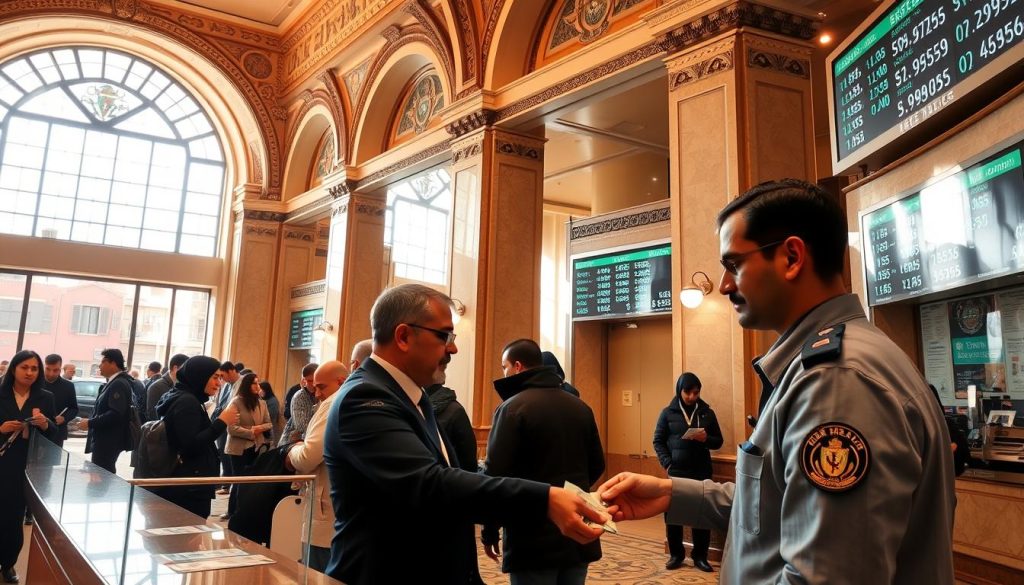
Best Currencies to Bring for Exchange
When planning your trip, it’s smart to carry USD or EUR. These currencies are preferred at exchange offices and offer better rates. Clean, undamaged bills are more likely to be accepted, so check your cash before you travel.
Bringing smaller denominations can also be helpful. This gives you flexibility when exchanging money or making purchases. Avoid relying on less common currencies, as they may not be accepted or could result in lower rates.
Where and How to Exchange Your Money
For a safe and convenient experience, use authorized exchange offices. These are often found at airports, city centers, and shopping malls. They provide reliable service and competitive rates, making them a trusted choice for tourists.
Here are some tips for exchanging money:
- Check current exchange rates before you go. Rates can vary between the official and open market.
- Avoid unregulated street exchanges. They may offer higher rates but come with risks like scams or counterfeit currency.
- Exchange smaller amounts as needed. This limits the cash you carry and reduces the risk of loss.
By planning ahead and using trusted offices, you can navigate the exchange process with confidence. This ensures you have the local currency you need for a smooth trip.
Iran: Ultimate Travelers Guide to Currencies & Payments
Managing your finances during your trip can be simplified with the right tools and strategies. One of the most effective solutions is the Iran Tourist Debit Card. This card functions like a local bank card, allowing you to make purchases, withdraw cash, and even shop online.
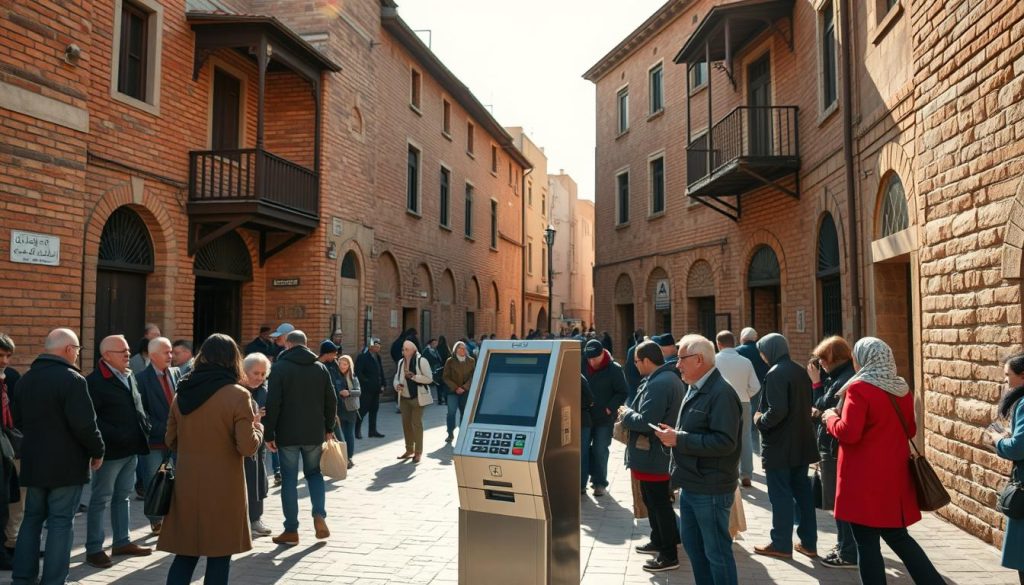
Leveraging the Iran Tourist Debit Card
The Iran Tourist Debit Card is designed to make your transaction process smoother. You can use it at hotels, restaurants, and online stores, eliminating the need to carry large amounts of cash. This not only enhances security but also ensures you’re prepared for any situation.
Applying for the card is straightforward. You can complete the process upon arrival and pick it up at designated locations. This allows you to plan ahead and focus on enjoying your trip without financial stress.
Balancing Cash and Digital Transactions
While the card is convenient, it’s still wise to carry some cash, especially for smaller purchases or in rural areas. Balancing cash with digital payments ensures you’re covered in all scenarios. For example, you might use the card for a hotel booking but rely on cash for local transport or street vendors.
This approach also helps you manage your budget effectively. You can track your spending through the card’s system while keeping cash for unexpected expenses. It’s a practical way to navigate the local payment landscape.
By combining these methods, you’ll have a seamless financial experience. Whether you’re shopping, dining, or exploring, you’ll be ready for any transaction that comes your way.
Modern Digital Payment Innovations in Iran
The rise of mobile wallets and fintech startups is transforming the financial landscape. In urban centers, innovative payment methods are becoming the norm, offering convenience and efficiency. These advancements are reshaping how both locals and travelers manage their money.
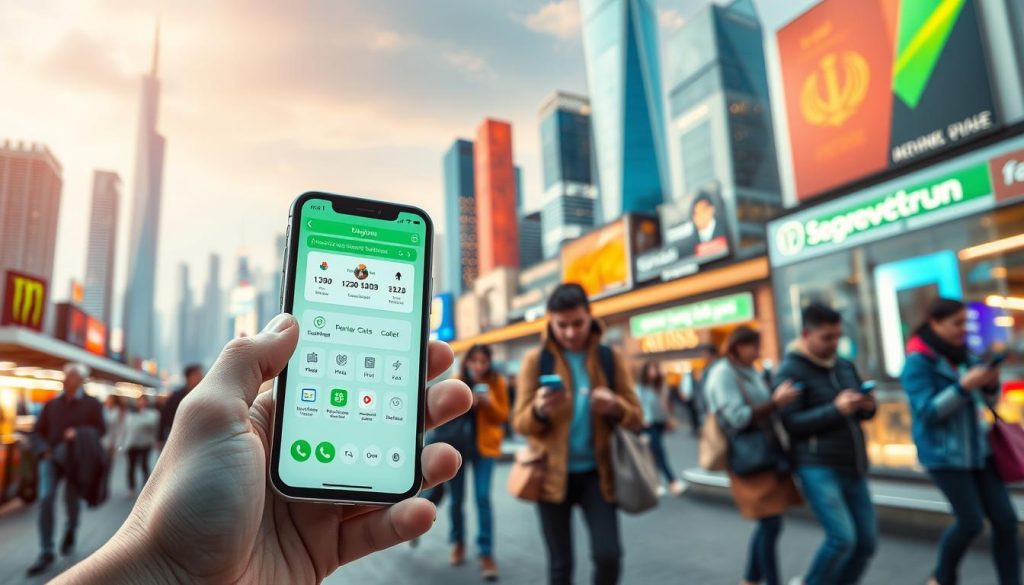
Mobile Wallets, Neobanks, and Fintech Startups
Mobile wallets are gaining popularity, especially in major cities. Apps for services like taxis and food ordering now support QR code scanning, making transactions seamless. This shift is driven by the need for faster and more secure payment options.
Neobanks like Blubank and Fardabank are leading the charge in modern banking. These platforms offer digital solutions that cater to everyday needs, from online shopping to bill payments. Their user-friendly interfaces make them accessible to everyone.
Sanctions have played a role in promoting local fintech solutions. With international services unavailable, local startups have stepped up to fill the gap. This has led to a surge in innovative payment methods tailored to the needs of the region.
Online Payment Trends in Major Cities
In cities, digital payments are becoming the preferred choice for many. From shopping malls to local vendors, the adoption of these systems is widespread. This trend is particularly beneficial for travelers, who can now rely on apps and cards for most transactions.
Here’s a quick comparison of popular digital payment methods:
| Method | Features | Best For |
|---|---|---|
| Mobile Wallets | QR code scanning, app-based transactions | Everyday purchases |
| Neobanks | Online banking, bill payments | Managing finances |
| Tourist Debit Cards | Cash withdrawals, online shopping | Travelers |
These innovations are not just changing how people pay but also enhancing the overall experience. Whether you’re a local or a visitor, these tools make managing money easier and more efficient.
Understanding Currency in Iran: Rials vs. Tomans
Navigating the dual currency system can be tricky but manageable with the right knowledge. The official currency is the rial, but everyday transactions are often quoted in tomans. This unique setup requires a clear understanding to avoid confusion during your trip.
Deciphering Currency Conversions
The relationship between rials and tomans is straightforward: 10 rials equal 1 toman. For example, 10,000 tomans are equivalent to 100,000 rials. This conversion is essential when interpreting prices, as locals typically use tomans in conversation.
Here’s a quick guide to help you:
- 10 rials = 1 toman
- 100,000 rials = 10,000 tomans
- 1,000,000 rials = 100,000 tomans
Understanding these conversions will make it easier to manage your payments and avoid misunderstandings.
Insights on Exchange Rates and Market Rates
Exchange rates in this region can fluctuate due to inflation and economic factors. There are two main rates to consider: the official rate and the open market rate. The open market rate often offers better value, but it’s essential to verify rates at trusted banks or authorized exchange offices.
Here are some tips to stay informed:
- Check reliable online sources for current rates.
- Use official exchange offices for fair transactions.
- Avoid unregulated street exchanges to minimize risks.
These dynamics can impact your overall travel budget, so staying updated is crucial.
By mastering the distinctions between rials and tomans and keeping an eye on exchange rates, you’ll be well-prepared to handle your finances confidently. This knowledge ensures a smoother and more enjoyable experience during your trip.
Practical Tips for Money Management on Your Trip
Handling your finances efficiently can make your journey smoother and stress-free. With a mix of cash and digital payments, you’ll be prepared for any situation. Here are some practical tips to help you manage your money wisely.
Budgeting and Safe Handling of Funds
Start by setting a daily budget. This helps you track spending and avoid overspending. Carry only the cash you need for the day and store the rest in a hotel safe. This reduces the risk of loss or theft.
When exchanging currency iranian, use authorized offices for better rates. Keep an eye on the iranian rial exchange rates to ensure you’re getting fair value. Avoid carrying large amounts of cash in public.
Using Prepaid and Tourist Debit Cards Effectively
The card iran Tourist Debit Card is a great tool for managing your funds. It allows you to make purchases, withdraw cash, and even shop online. Apply for the card upon arrival to streamline your transactions.
Here are some tips for using the card:
- Use it for larger purchases or online bookings.
- Carry some cash for smaller transactions or in rural areas.
- Monitor your spending through the card’s system to stay within budget.
By balancing cash and digital payments, you’ll have a seamless financial journey. These strategies ensure you’re ready for any situation, whether you’re exploring cities or rural areas.
Exploring Payment Methods across Iranian Cities
Planning your financial strategy is key to a smooth journey across different regions. Whether you’re arriving at the airport or exploring smaller towns, knowing your options can save you time and stress. This section will guide you through the best practices for managing your funds effectively.
Airport Exchanges versus City Exchange Offices
Exchanging money at the airport is convenient, but it often comes with less favorable rates. For example, you might find that city exchange offices offer better deals. If you’re in a rush, exchanging a small amount at the airport can be a practical option for immediate needs.
In cities, authorized exchange offices are widely available. These locations provide competitive rates and are often found in popular areas like Ferdowsi Square in Tehran or Karim Khan Square in Shiraz. Planning your exchange during the day ensures you get the best value for your money.
Local Payment Services for Everyday Transactions
In smaller towns, digital payment solutions might be limited, so cash remains essential. For instance, local vendors and transport services often rely on physical money. Carrying the right amount of cash ensures you’re prepared for these situations.
Local payment services adapt to provide reliable transactions even in remote areas. For example, some shops may accept prepaid cards or mobile payments, but it’s wise to confirm beforehand. Balancing cash with digital methods ensures you’re covered wherever your trip takes you.
Conclusion
Being prepared with both cash and digital options ensures a smooth journey. Managing your finances effectively requires understanding local banking systems and using trusted methods for currency exchange. The Tourist Debit Card offers convenience and security, making it a reliable choice for your needs.
Plan ahead by visiting authorized exchange offices and using digital payment methods. This balance allows you to shop and explore without hassle. Always check websites for updated exchange rates and payment system changes to stay informed.
By staying prepared and maintaining a connection to reliable resources, you can enjoy a stress-free experience. Whether you’re exploring cities or rural areas, these strategies will help you manage your finances with confidence.
The above is subject to change.
Check back often to TRAVEL.COM for the latest travel tips and deals.
